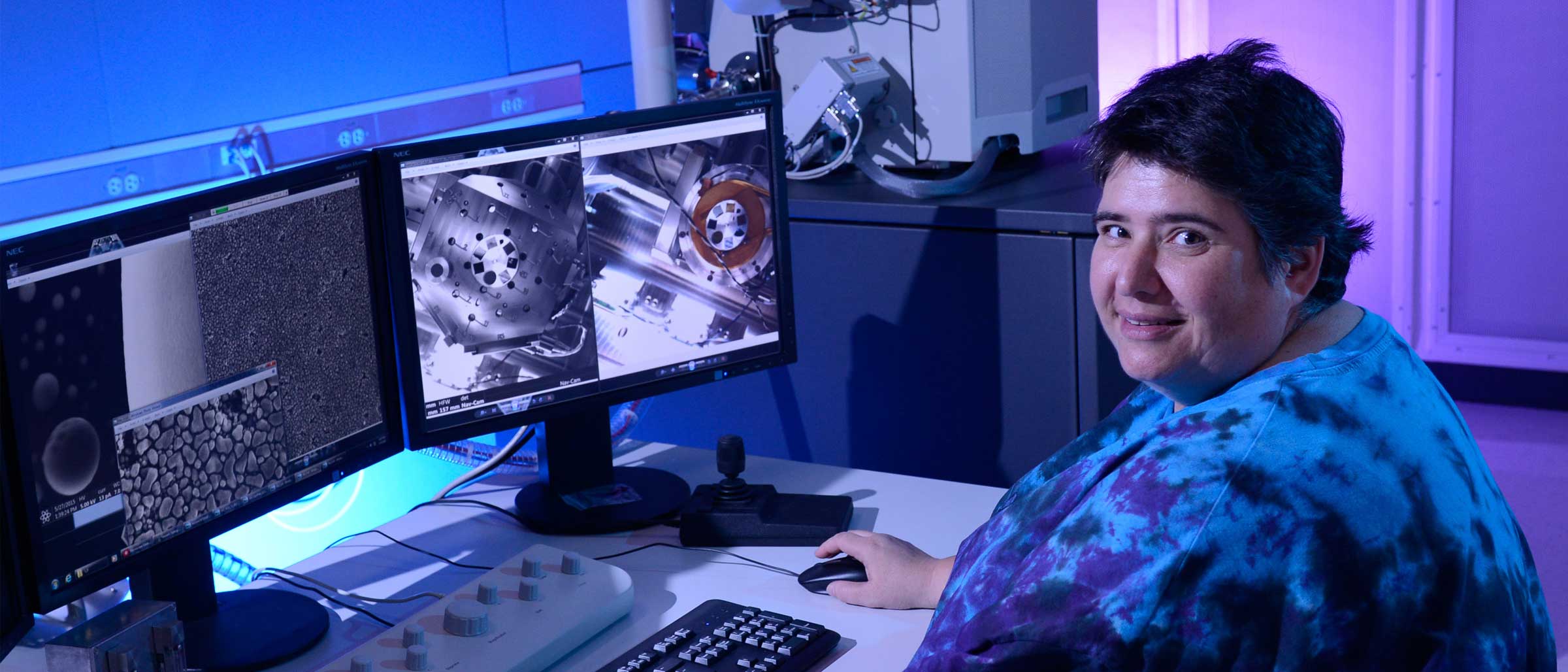Nicastro receives American Society for Cell Biology research award

When Dr. Daniela Nicastro was recruited to UT Southwestern in 2015 to build a state-of-the-art cryo-electron microscopy (EM) facility, she was charged with designing climate-controlled, low-vibration EM suites, purchasing instruments, training staff, and securing additional funding. UTSW’s cryo-EM facility opened in 2016, giving researchers access to instruments that can record images of proteins, macromolecular complexes, and cells with up to atomic resolution. To meet campus demand, the facility started to expand last year.
“For the past four years, I basically had two jobs: establishing/directing the Cryo-EM Core Facility and running my research lab,” said Dr. Nicastro, a structural cell biologist with extensive experience in electron microscopy. “At the end of 2019, the facility was smoothly running, allowing me to resign as Director and refocus my full attention on my research lab.”
Over the past decade, Dr. Nicastro has worked to develop and apply cryo-EM/tomography techniques to visualize the molecular structures of large cellular complexes in their native environment. Now Dr. Nicastro, Professor of Cell Biology and a Cancer Prevention and Research Institute of Texas (CPRIT) Scholar, is advancing cryo-FIB (focused ion beam) milling to generate thin sections of relatively large, high-pressure frozen (HPF) biological samples.
“Most eukaryotic cells, let alone tissues and organisms, are too large to be imaged directly by cryo-electron tomography. HPF is required to freeze them without damaging ice crystal formation, and cryo-FIB milling generates sections thin enough for imaging. But milling these samples is still under development,” she noted.
This latest research effort is exactly the type of innovative science that has led to her being honored with the 2020 Women in Cell Biology (WICB) Mid-Career Award for Excellence in Research by the American Society for Cell Biology. The award is given to a woman at the mid-career level who exemplifies a high level of scientific endeavor and leadership and who has demonstrated a track record of exceptional scientific contributions to cell biology.
“It is indeed a great honor for me and my lab to receive this award. It recognizes the talent and work of all of my lab members over the years, and shows that our research matters,” she said. “I also hope that I can serve as a role model for a new generation of female scientists in the structural biology field, where disciplines like biophysics and cell biology meet.”
In addition to receiving $1,000, the winner is invited to speak at a minisymposium at the Cell Bio Virtual 2020 online meeting in December.
Born and raised in Germany, Dr. Nicastro received her Ph.D. in biology from the Ludwig-Maximilians University in Munich and worked at the Max Planck Institute for Biochemistry. She came to the U.S. as a postdoctoral fellow at the National Center for Research Resources for 3D Electron Microscopy of Cells at the University of Colorado in Boulder before joining the faculty at Brandeis University, where she also directed a small cryo-EM facility.
UTSW’s instrumentation improved the resolution of the imaging data in Dr. Nicastro’s lab, while her CPRIT recruitment award allowed her to invest in emerging technologies, such as the purchase of a $1.2 million cryo-FIB milling instrument to generate slices of rapidly frozen cells, tissues, and small organisms like Drosophila larva and C. elegans worms that would otherwise be too thick to be imaged by cryo-electron tomography.
“Both made experiments and interpretations feasible that were previously not possible,” she said. “Overall, UT Southwestern provides the opportunities to realize new and big ideas, and provides a strong support system with several high-end core facilities. Additional attractions were the outstanding colleagues and research environment. In short, UT Southwestern is a fantastic place to perform research.”

